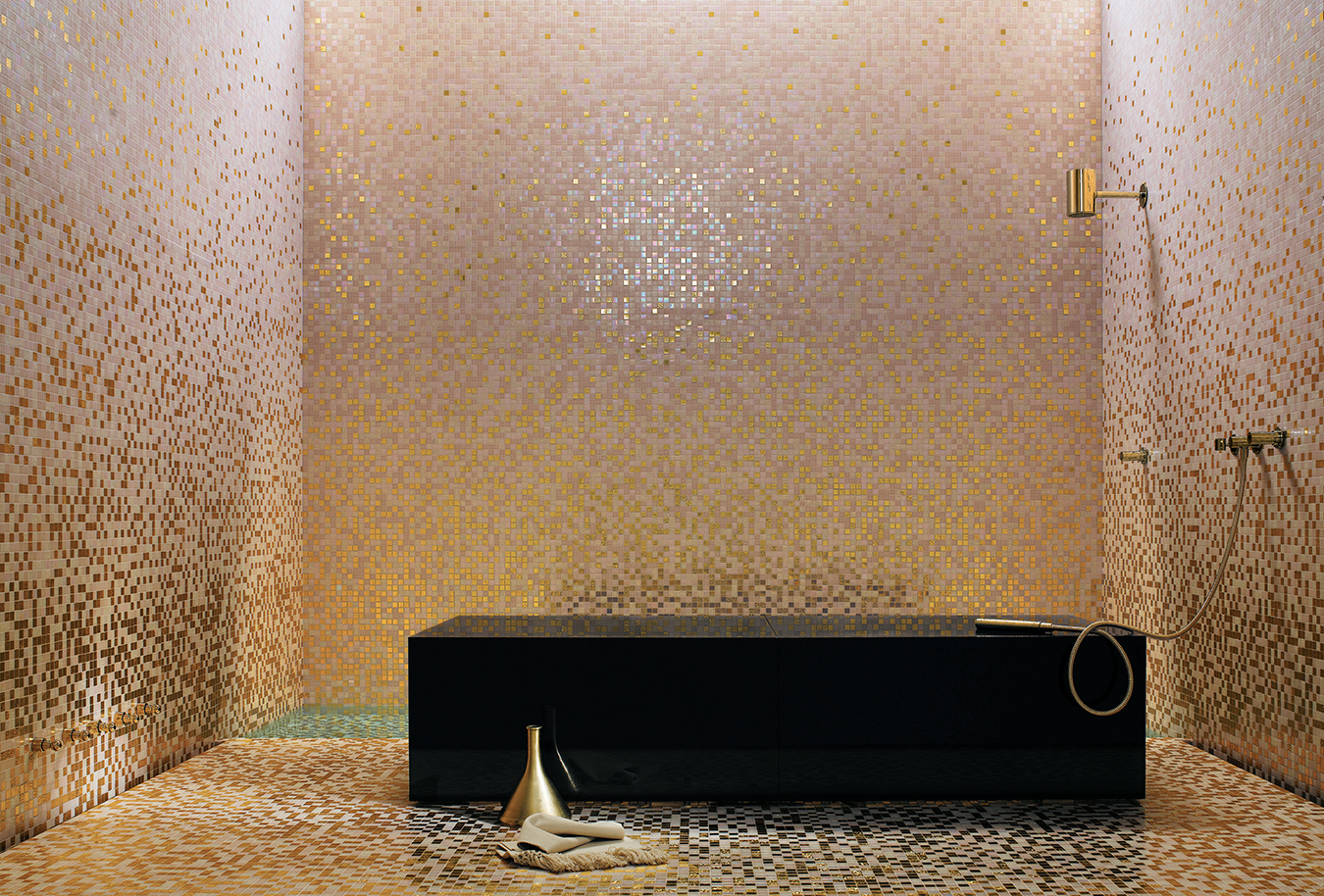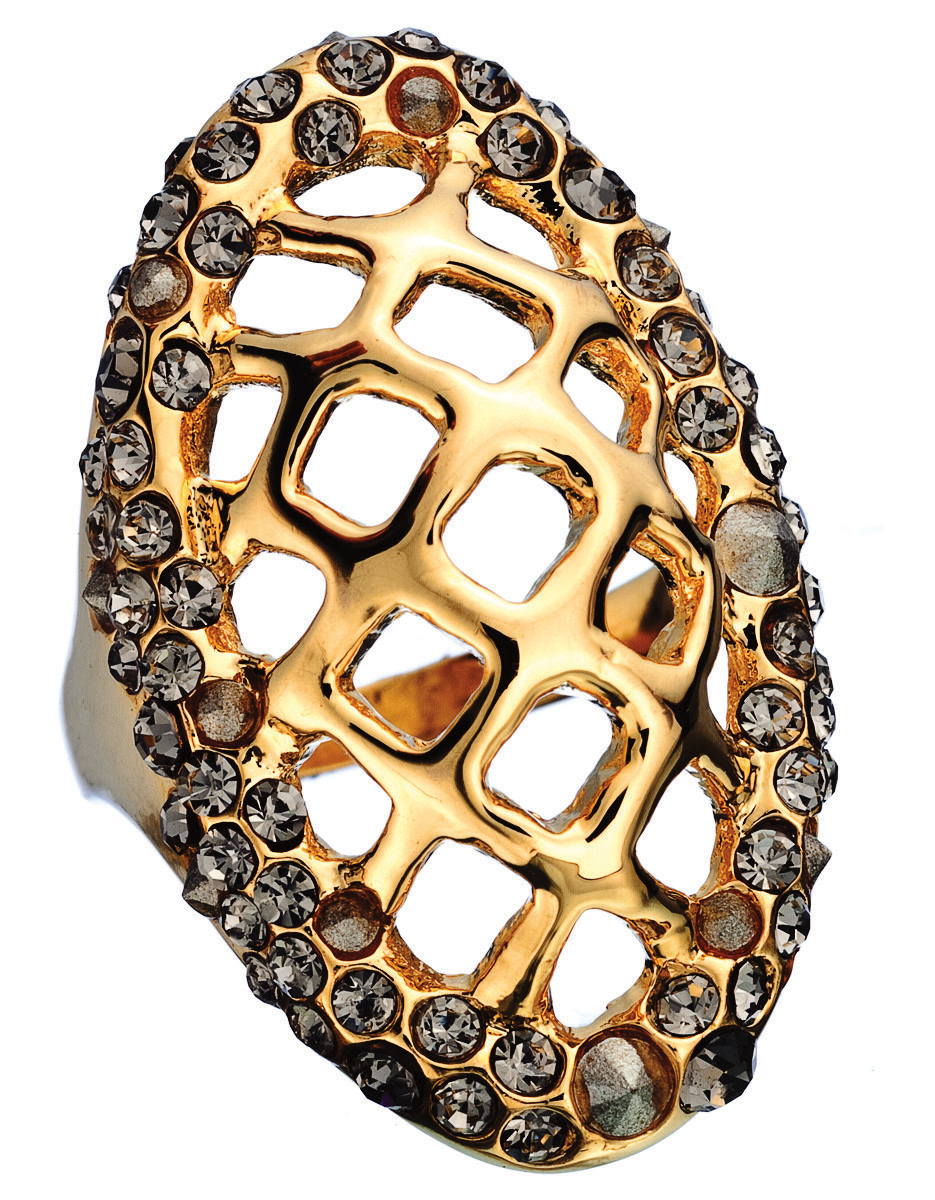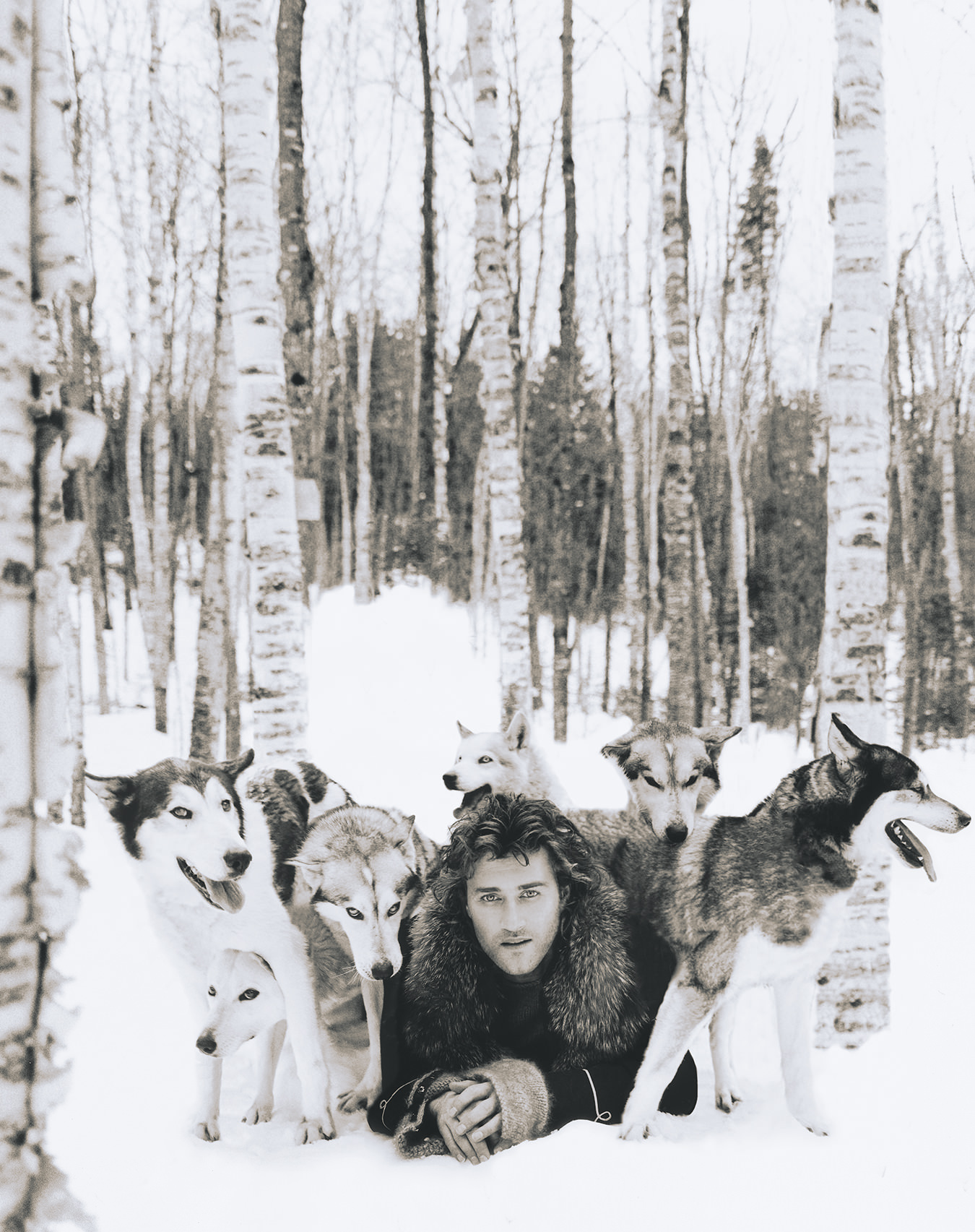Welcome to a New Era of Spencer Badu
Bold cuts and cultural resonance.
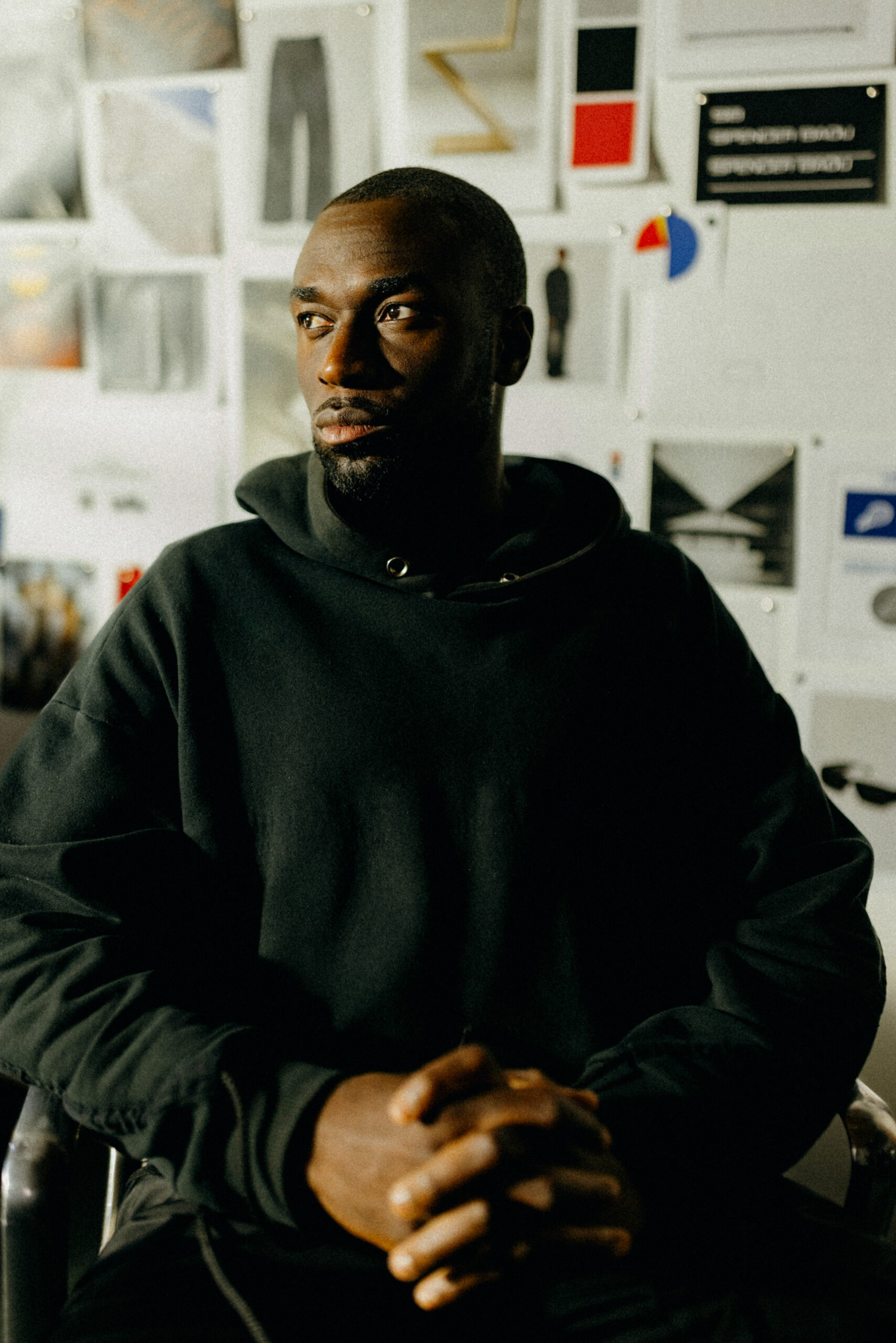
Nearly three years ago, I stumbled across a newly minted Canadian streetwear label while doing background research for a NUVO column. At the time, the label was branded S.P. Badu, founded by Canadian Ghanian designer Spencer Badu. Immediately distinctive in its bold cuts and cultural resonance, what S.P. Badu lacked in heritage, it made up for with intention. Within the week, I was on the phone with Badu working on a new profile of his label. When he described the brand, the elevator pitch sounded tighter than a Silicon Valley startup: the first fully unisex streetwear brand, ushering in an era of fashion defined by fluidity. It was a refreshingly clear ethos in a streetwear world too-often riddled with obscure values wrapped in a screen-printed hoodie.
But as Badu evolved as a designer, so too did his brand. The label shifted names (now known simply as Spencer Badu), vibrant colour became a staple, and the pieces began deviating from the silhouettes fans had come to recognize. What else could we have expected from a label founded on the virtues of fluidity?
Now, three years later, a lot has changed for Badu and his brand. They’ve grown immensely, built partnerships with the NBA, introduced bricks-and-mortar pop-up shops, and continued to tinker with their identities at every turn. I had the chance to catch up with Badu this month to discuss the label’s growing pains, the evolution of Toronto streetwear, what remains on his bucket list, and why he felt he needed to stray from the neat and tidy elevator pitch he had constructed.

Cut Different Collection by Spencer Badu in partnership with Ruffles Canada and the Toronto Raptors
Since we last talked, I feel like Toronto has carved out such a distinct identity in fashion, with you and your peers being at the forefront of that. Does the industry feel different from a creative or commercial sense since 2021?
I feel like Toronto is going through a renaissance period. Whether it’s through the internet or in-person experiences, there are ways of selling and connecting to different audiences, whether they’re local or around the world, that weren’t available to us before. We’re seeing the ability of brands to build their companies and talk directly to their audiences and carve out their own lanes. And I think now, with that access, it seems like people are a lot more receptive to our creativity. Right now, I just feel like it’s the perfect pairing of having the right creatives at the right time.
What do you think is the main catalyst behind people being more receptive to Canadian designers? Obviously, social media helps with the communication. It makes the messaging global. Is it that simple? Or is there something else?
Yeah, that’s interesting. Well, I’ll speak from an audience perspective and a creative’s perspective. From an audience perspective, we’re just being exposed to so many things: art, history, music, fashion. When I first started making clothes, a lot of people weren’t aware of these avenues, especially if it’s not in your own backyard. This world is either intimidating or expensive. But now, there’s more universal accessibility. You can go down an internet rabbit hole and develop your own taste based off of a million different reference points. That’s the communication element of it. And then, I think for Toronto, as a city, I think we’ve always had a vibrant culture. The rest of the world just wasn’t aware of it. It started with music. People started to look at Drake and Justin Bieber and The Weeknd and thought, “Hey, what’s going on over there?” Like, there’s something in the water, you know?
That opened the doors for curiosity on a global level. Then, it’s more or less my job, Nicko [Bruno]’s job, Adam [Appugliesi]’s job, Pierre [Bassene]’s job to win over those people, the more casual spectators of the culture.
When you first started the label, it had such a tight thesis. There was this distinct tone to what you were adding to the streetwear world, not just in Canada but beyond: gender neutral clothing that didn’t shy away from daring cuts. But you’ve evolved since then, digging more into your personal heritage, injecting more colour, et cetera. From your perspective, what are the most drastic points of evolution? Is it the technical elements? Is it the philosophy behind the label?
I think, like you said, it’s been establishing a clearer philosophy, a clearer reference point. Messaging has been a big focus for us because, I think with anything creative, when you first start, you’re really just trying to figure out who you are. You’re looking at external references and people who came before you. You’re just looking around and asking, “How do I be an artist?” “How do I be a designer?” “How do I be a musician?” For me, a shift happened during the pandemic. It forced me—it forced a lot of us—to look more internally. I started honing in on the things that set me apart, and I think leaning into vulnerability has become my biggest asset.
Obviously, we have the same core philosophies that first launched us. Now, it just feels louder and more potent. Back then, I was trying to put myself in a box, per se. I’d never do that again. Being vulnerable and experimenting are the two things most integral to Spencer Badu as a brand. Vulnerability lets me be more personal with the work.
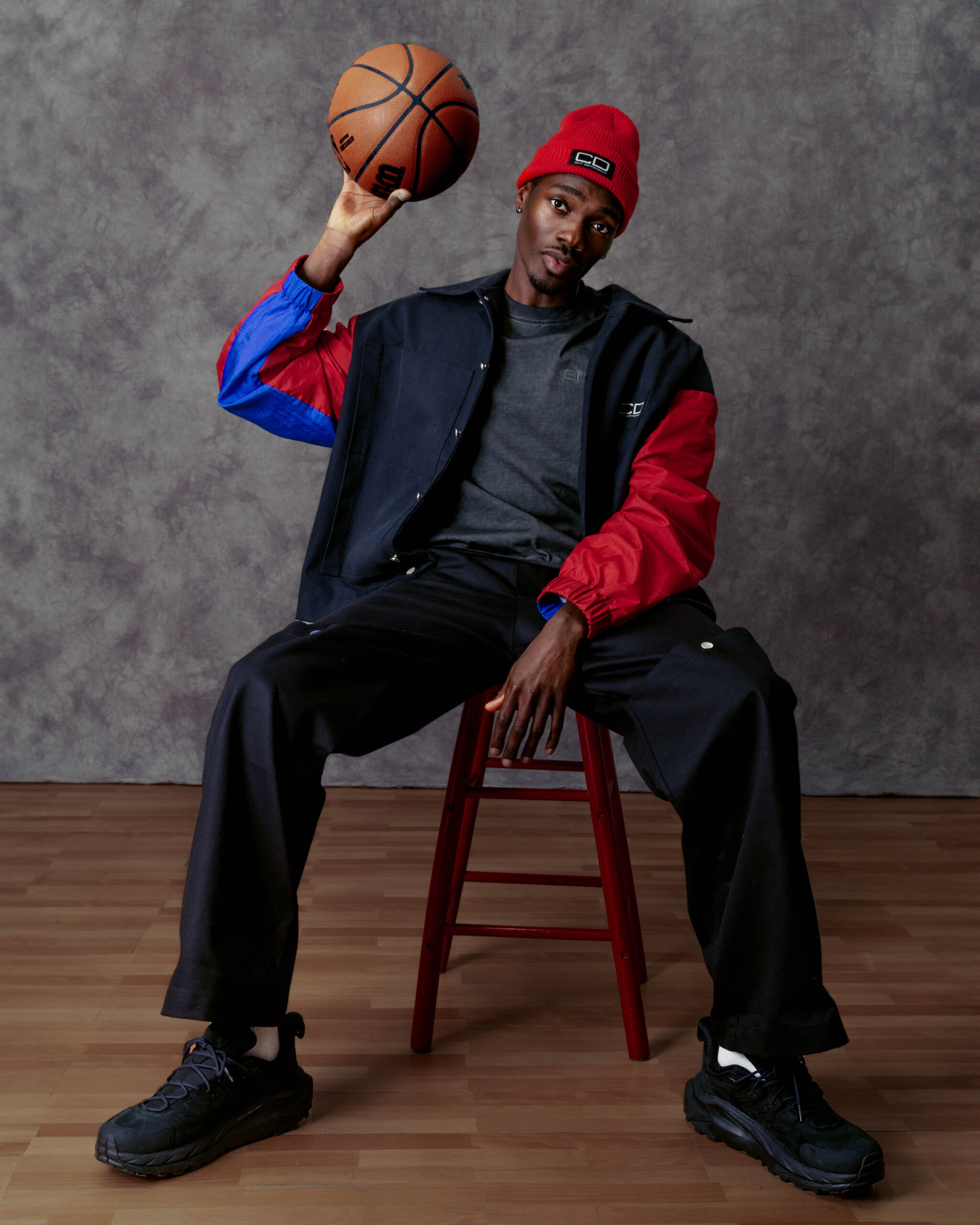
Cut Different Collection by Spencer Badu in partnership with Ruffles Canada and the Toronto Raptors
What box were you trying to fit into before?
You know, I think when we did the last interview, I thought I could kind of be like Margiela, like Peter Do, where I’m just super mysterious. But then I also had to realize that that’s not me. I was trying to create a character for the brand. I think that character became really intimidating for a lot of people.
It’s that inaccessibility, like we talked about before, right?
Right, exactly. I had to pause and think, “Why does everyone seem scared of me? I like to think I’m not a scary guy.” So I’ve just made an effort to put myself out there, communicate about the work and where it comes from. That’s what led us to where we are today.
The tough part had to be knowing you had such a clean elevator pitch to describe the label. That’s usually the biggest hurdle for a young brand, answering “What do you do and why are you different?” Was it daunting to realize you needed to allow the brand to be fluid, even if that meant shifting the label’s identity?
It’s so funny. When we first started the brand, it was S.P. Badu. As you know, we changed it to be a fully eponymous label a few years later, and I think that’s when I realized that the label would always be a bit fluid. Like, before, the label and I could be two separate entities. It’s like a painting: this is my work, but I can step away from it. But when we changed the name to Spencer Badu, all of a sudden, that vulnerability kicked in. I realized that it needed to reflect me in a present sense. And if I’m always evolving as the creator, then we can’t pigeonhole the brand, as convenient as it might be.
It sounds like an odd distinction. But that was the line in the sand, for whatever reason. There was a responsibility around it.
I get that. And as you change, your reference points change. The sources that inspire you change.
I’m all about those personal references now. You can see it in the introduction of colour, my Ghanian heritage, things that have ties to me, specifically. I’m still into sources like the Bauhaus movement and other design philosophies, but those are so much more external, right? Again, it goes into playing the character of the creatives I saw. But then, I thought, “Cool. There’s more that I can speak to on a personal note.”
Right now, I’m so interested in the juxtaposition of being born in Canada but growing up in a household that felt like another world, culturally.
As those inflection points change and the brand evolves, have you noticed a shift in the prototypical Spencer Badu fan? Maybe this is unfair for such a fluid label, but if you were to describe the type of person you’re trying to speak to, who would it be?
Oh, man. You have no idea the rabbit hole you just dug up. It’s so funny. We did this exercise formally at the start of this year, and we realized there’s truly no archetype. There just isn’t. But there are commonalities. There’s a need to express themselves. Really, we want to create a sense of freedom for people wearing our clothes. We’re trying to be hyperinclusive. I’m not trying to sound preachy or whatever, but I think it’s about love and community.
Obviously, you’ve crossed a lot of bucket list items off this year. You had a bricks-and-mortar pop-up in Toronto, which I know meant a lot. You had a collaboration with the NBA. Now, you have a new collection rolling out. So what’s next for Spencer Badu in 2024?
We’re going to be in Europe at the top of the year for [Paris] Fashion Week, so that’s something we’re really looking forward to. For this collection that’s about to come out, I’ll get to see the clothes on people starting in 2024, so that’s always surreal too. Seeing people interact with the work and engage with the brand—people who I never expected to be apart of our community, like we talked out—is everything, so I can’t wait to see who else might discover us.
Spencer Badu’s latest collection is available now.
This interview has been edited for length and clarity.


